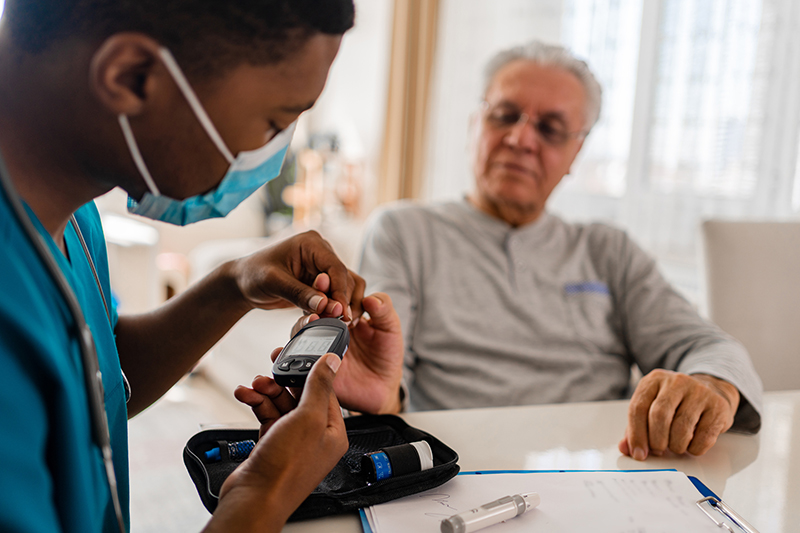Easy lifestyle changes for type 2 diabetes

The phrases “low-carb” and “no-carb” along with “watching my sugar” have gained popularity among those following trendy diets in recent years. However, monitoring carbohydrate intake can be a matter of life and health for those diagnosed with Type 2 diabetes.
The American Diabetes Association reports that in 2019, 37.3 million Americans (11.3 % of the population) had diabetes and estimates that 1.4 million are diagnosed every year. Family history, obesity, poor eating habits, and anti-rejection medications can put patients at risk of developing Type 2 diabetes.
The numbers may seem overwhelming, but with the support of your healthcare team you can manage the disease by following your provider’s advice and making some changes.
Certified Diabetes Educator and registered nurse Kim Moloney says there are easy lifestyle modifications you can make if you have been diagnosed with Type 2 diabetes or prediabetes. She suggests that patients should:
- Eat more low-carb veggies
- Exercise regularly – any activity you enjoy, at least 60 minutes three times per week
- Read food labels. Look carefully at serving size, carbs, protein and calories
- Avoid sweetened beverages like sweet tea, soda and juice
- Take a walk after meals
- Check your blood sugar levels before meals and at bedtime
High on the list, Moloney says, is “Get moving! Walking is the best.”
Moloney tells her patients that “all food is good, just some foods will benefit you more!” She explains that your meal plate should consist of:
- ½ low carb veggies (salad, green beans, broccoli, etc.)
- ¼ lean protein
- ¼ carbs
She also recommends starting with vegetables or protein and eating the carbs in the middle of mealtime or saving them until the end.
“Eating food in this order slows down the rise of the blood sugar from the carbs. The more carbs you eat, the more insulin your pancreas has to make. The more insulin you make, the more fat you store.”
She often gives the example of going to Red Lobster and advising patients to ask the server not to bring out the cheesy herb biscuits until the entrée is served. “Start with a salad with dressing on the side,” Moloney says. “The salad will curb your hunger but not raise your blood sugar and by waiting until the entrée for the hot bread you won’t end up eating five biscuits!”
She adds that carbs raise the blood sugar quickly. “Something can seem ‘sugar-free’ like Cheerios cereal, but it is all carbs.” She recommends that folks try to keep the carbs to 45 grams per meal or less.
“My husband is a cereal lover and the other day he said that his cereal had 21 grams of carbs, but when we looked at the label the serving size was only ¼ cup! He was probably having at least 1 cup (plus milk!), so it was more like 84 grams of total carbs.”
Moloney recommends using a CGM (continuous glucose monitor) if insurance will cover the cost. Measure your servings with a measuring cup. Use your smartphone to look up nutrition facts as you shop or prepare a meal, or even ask Alexa.
“The more you know how different things like food, illness, stress, medications and happiness affect your blood sugar, the easier it is to make changes.”
To learn more about Type 2 diabetes or set up an appointment with a physician, contact the EVMS Strelitz Diabetes Center.